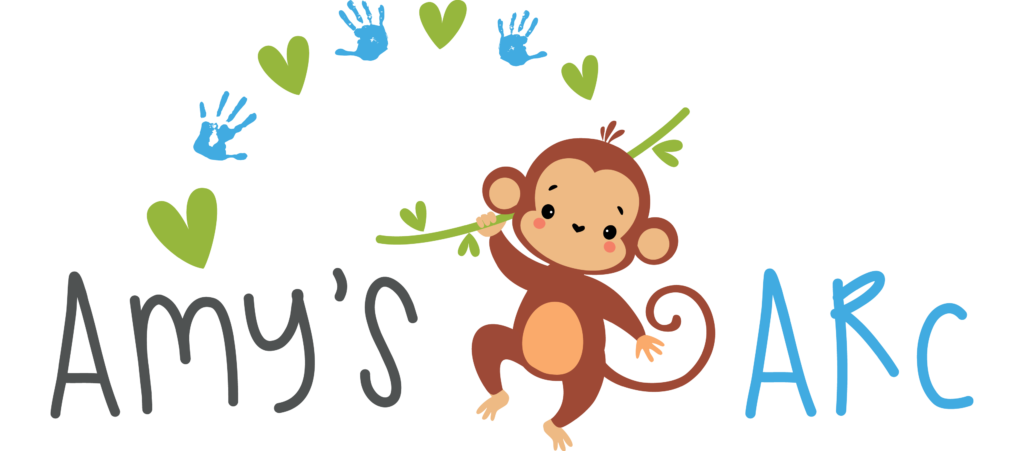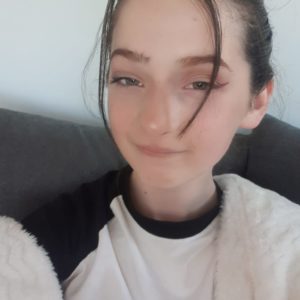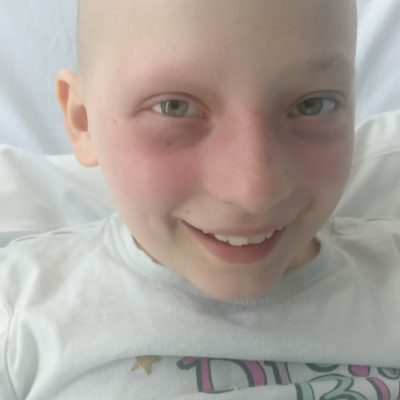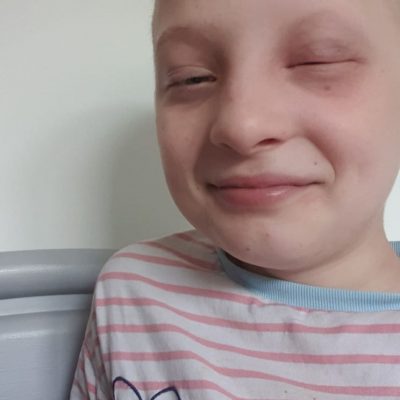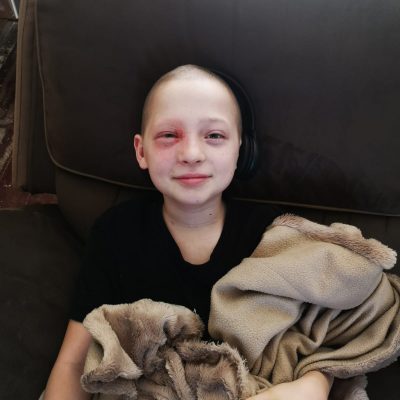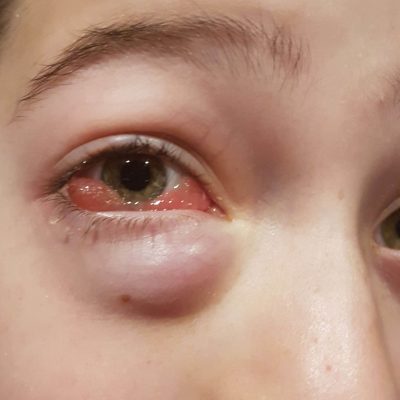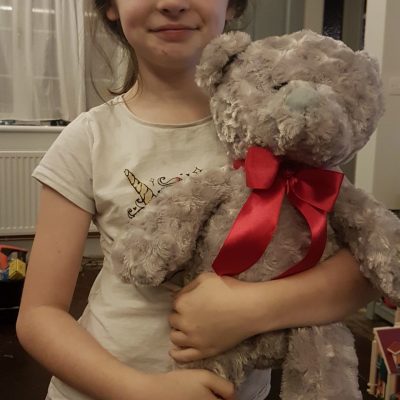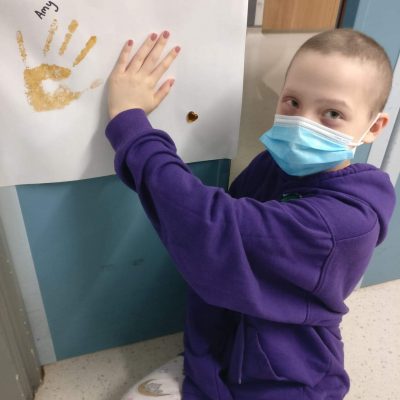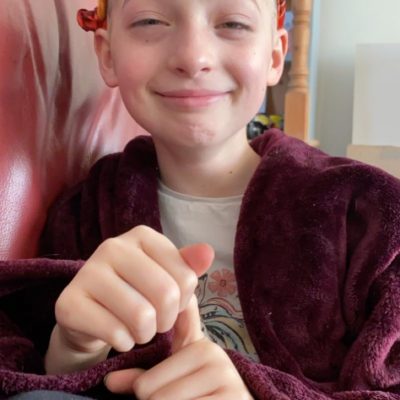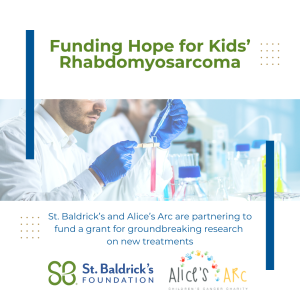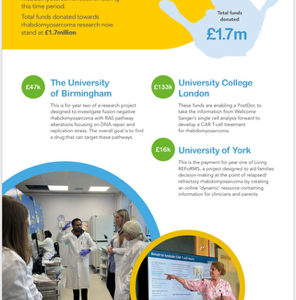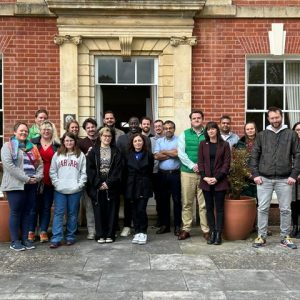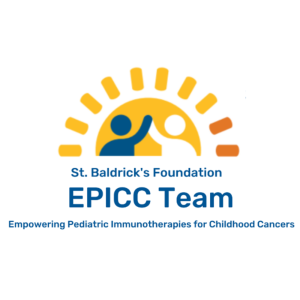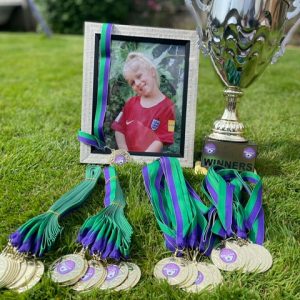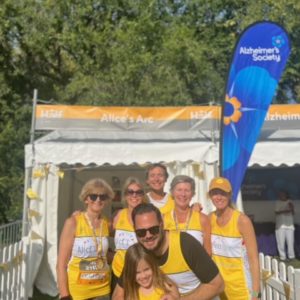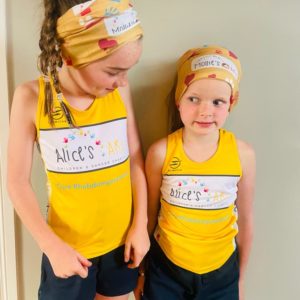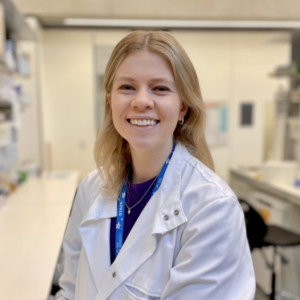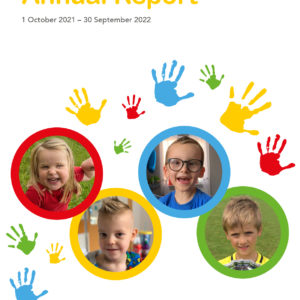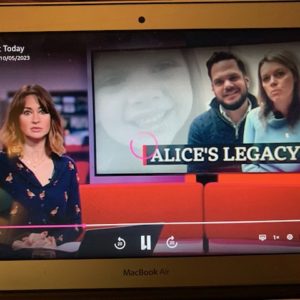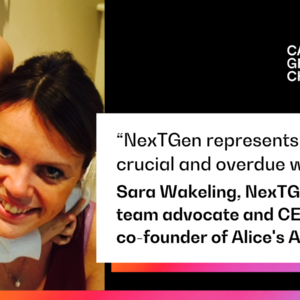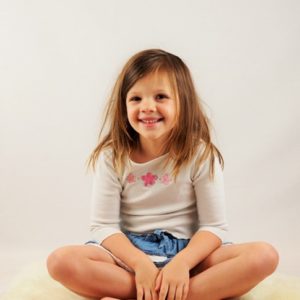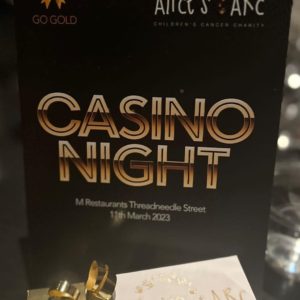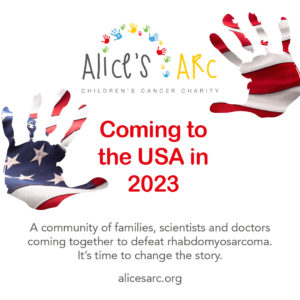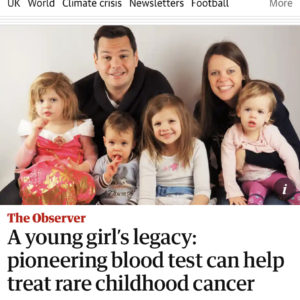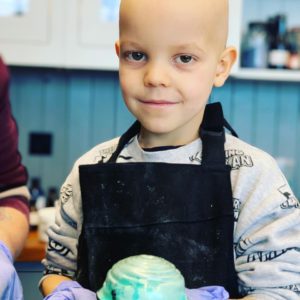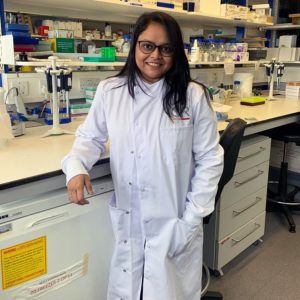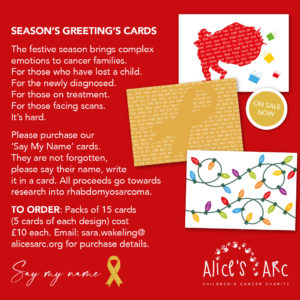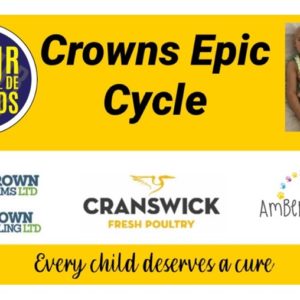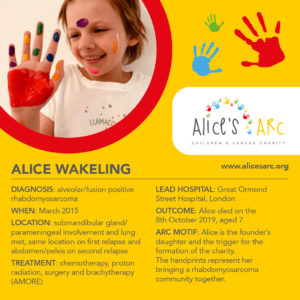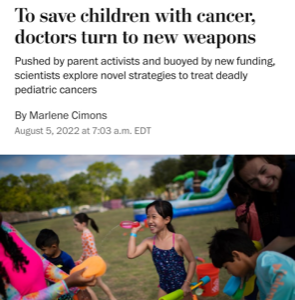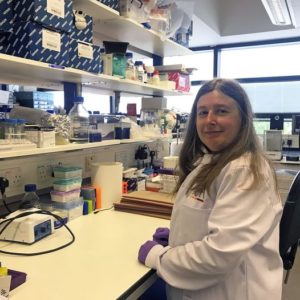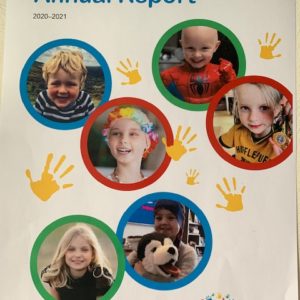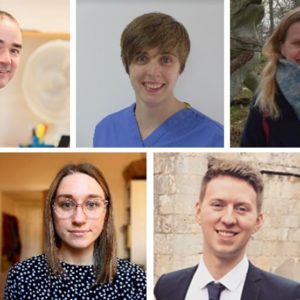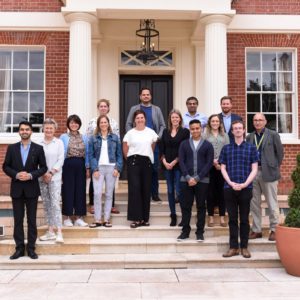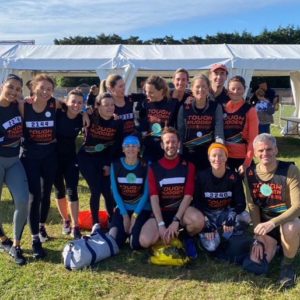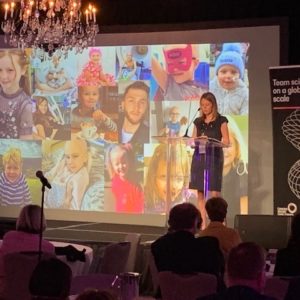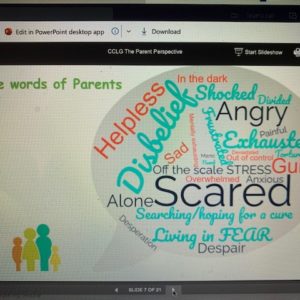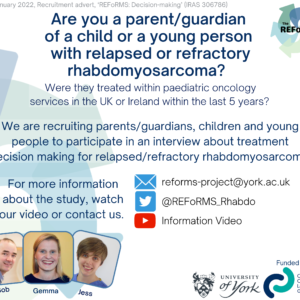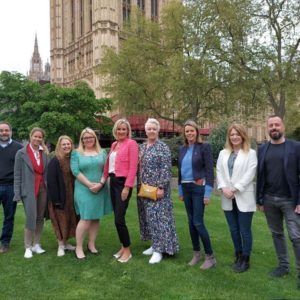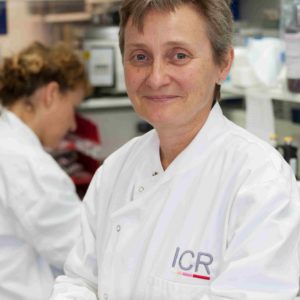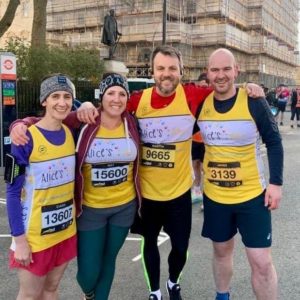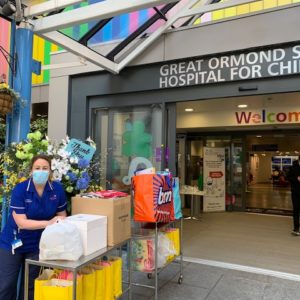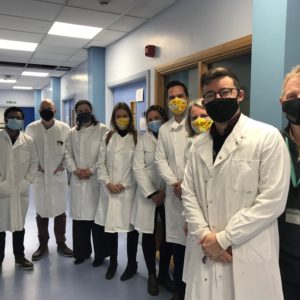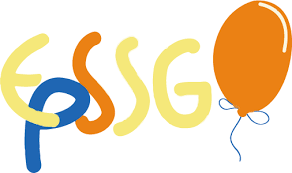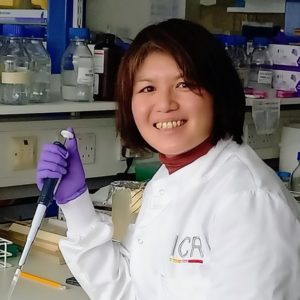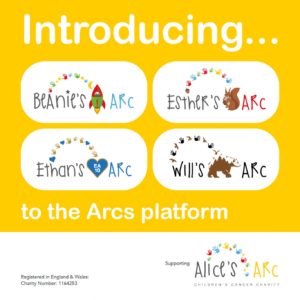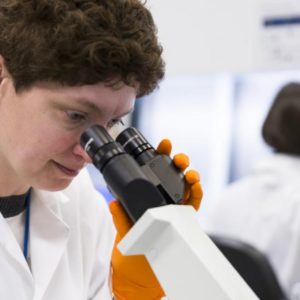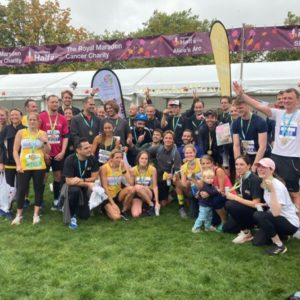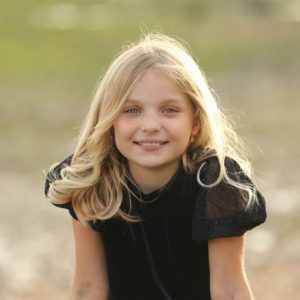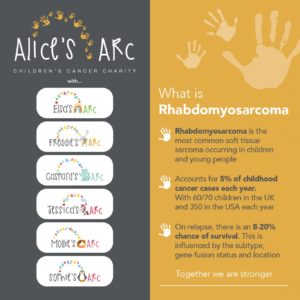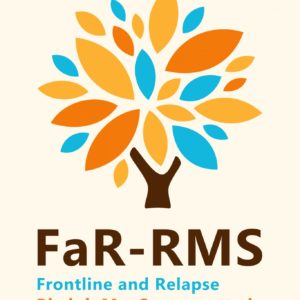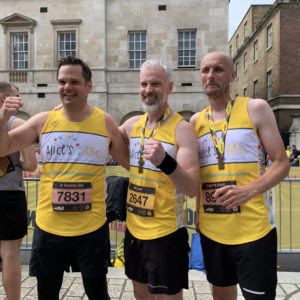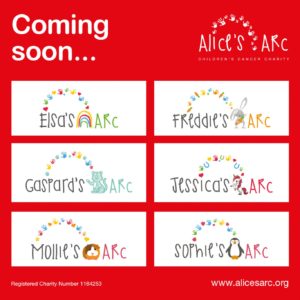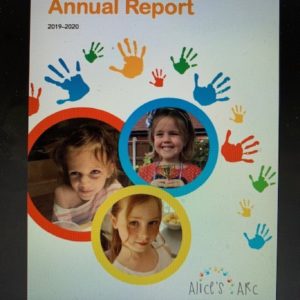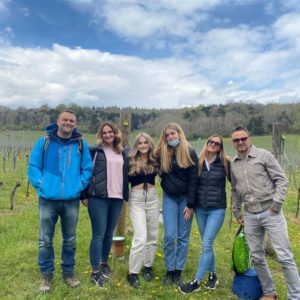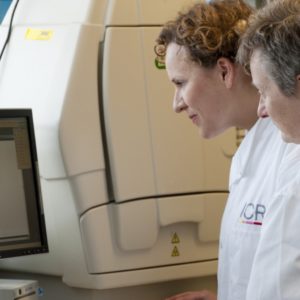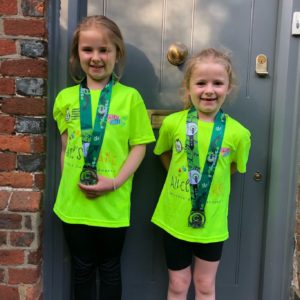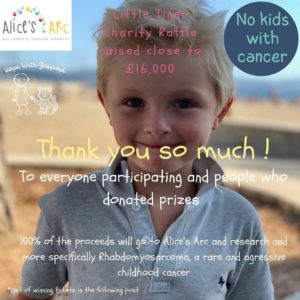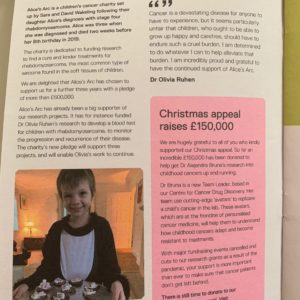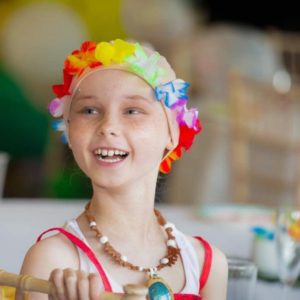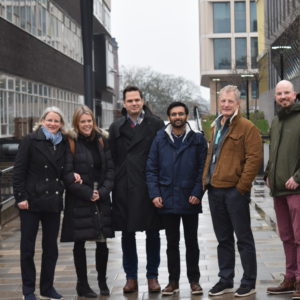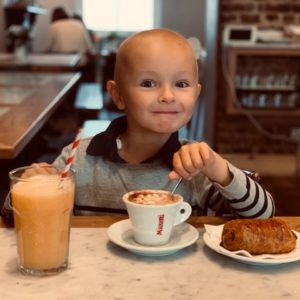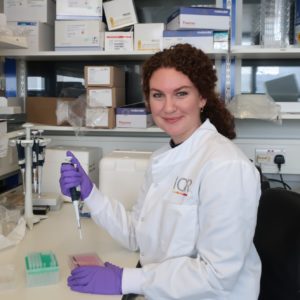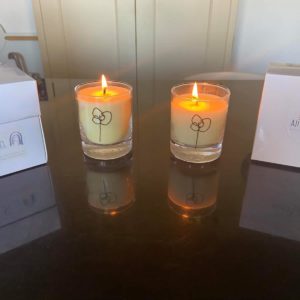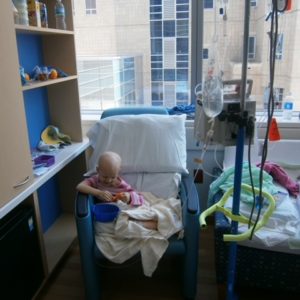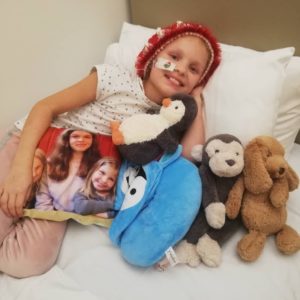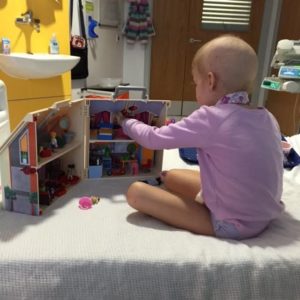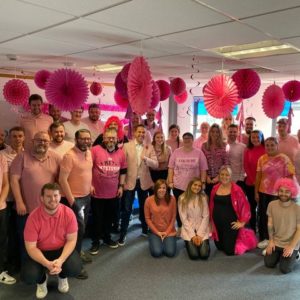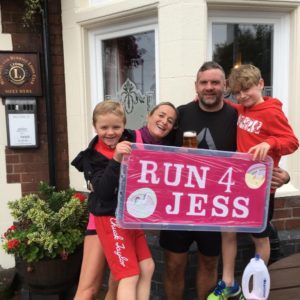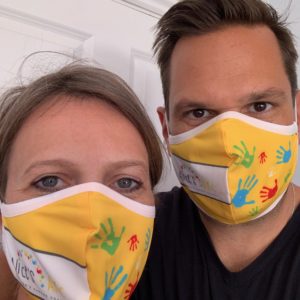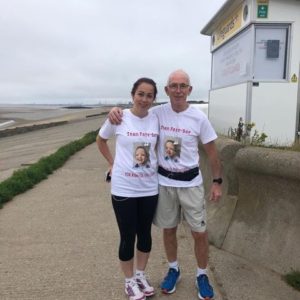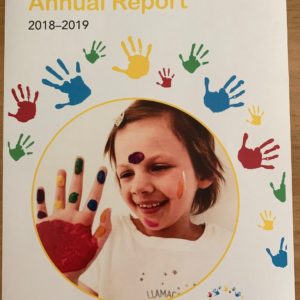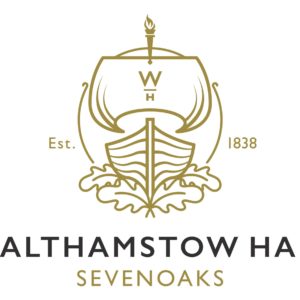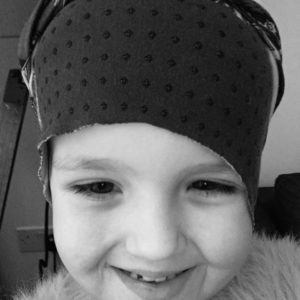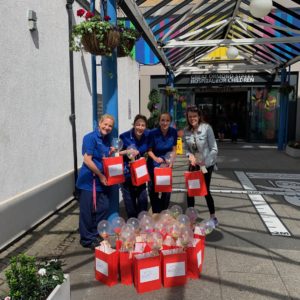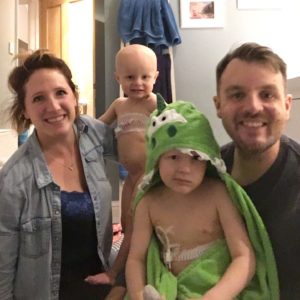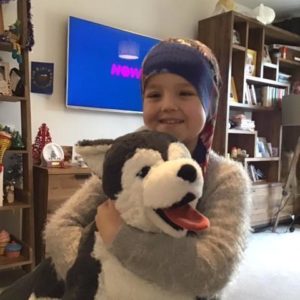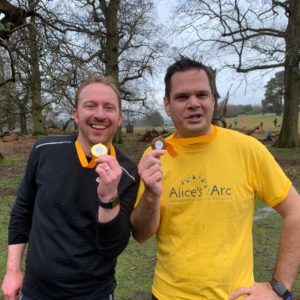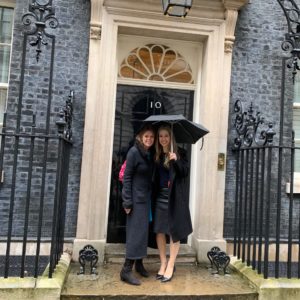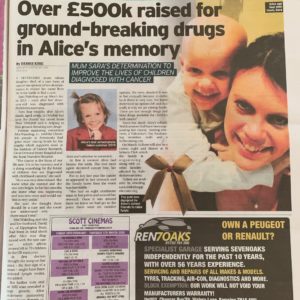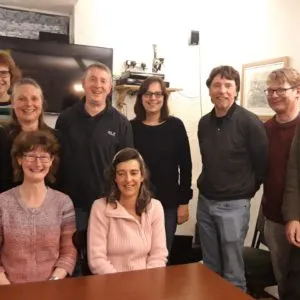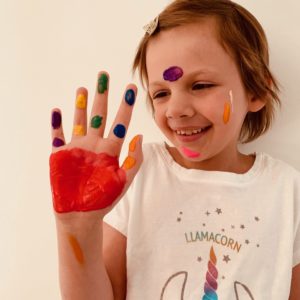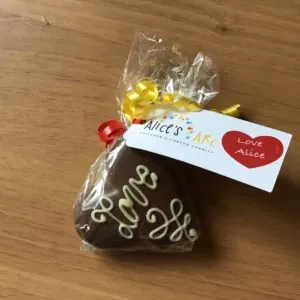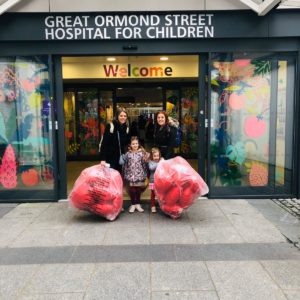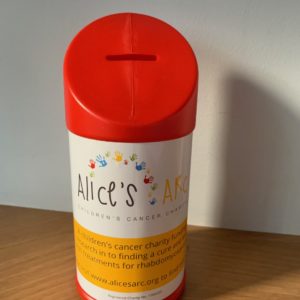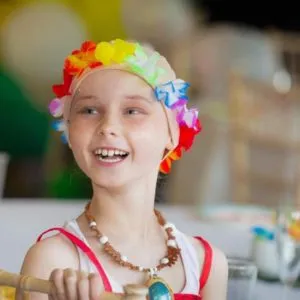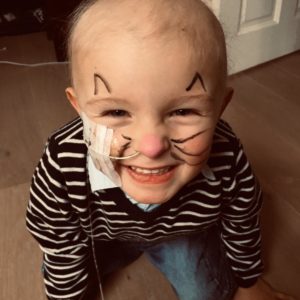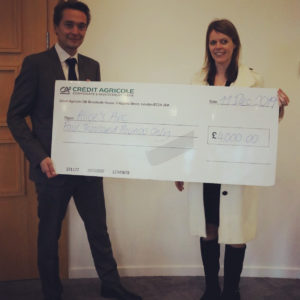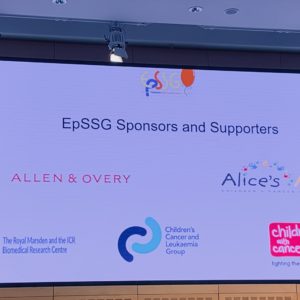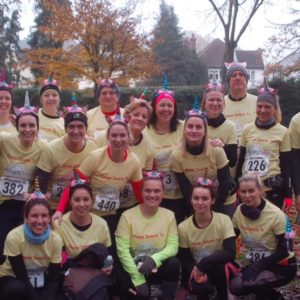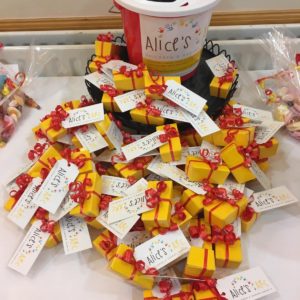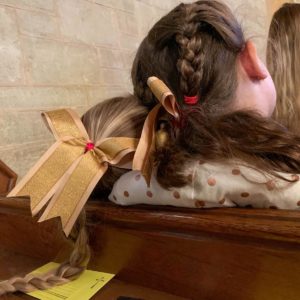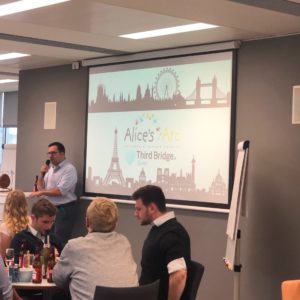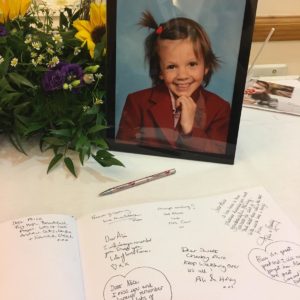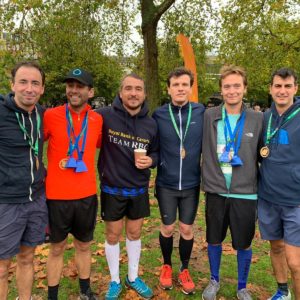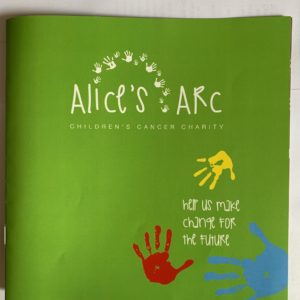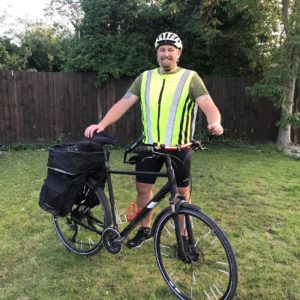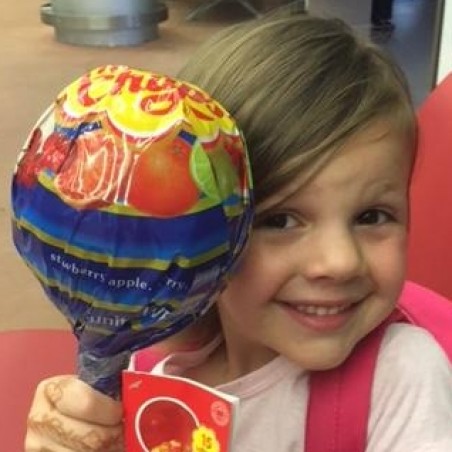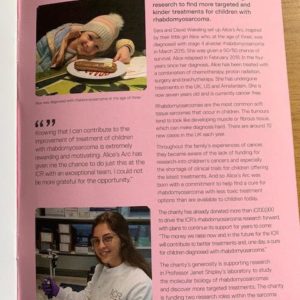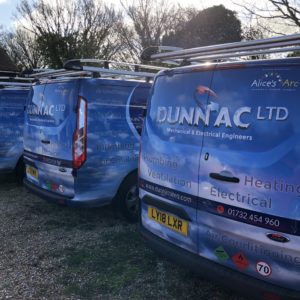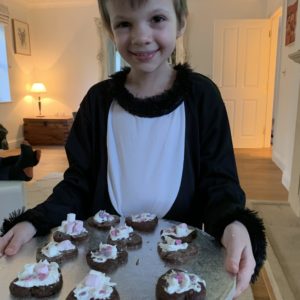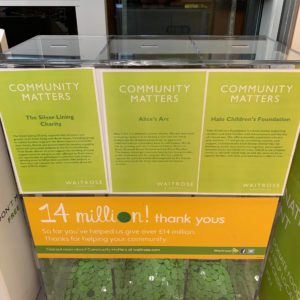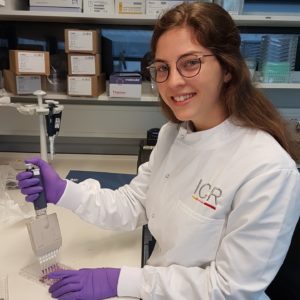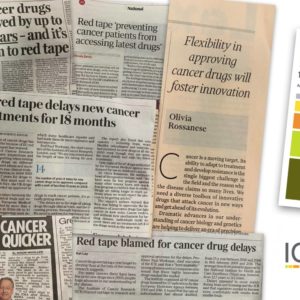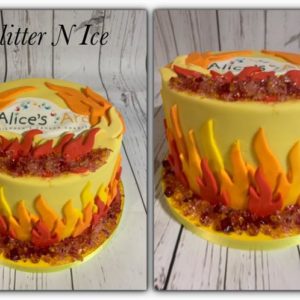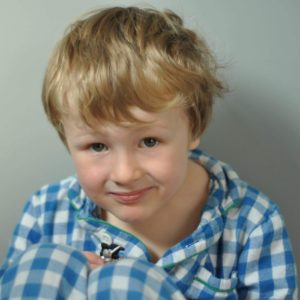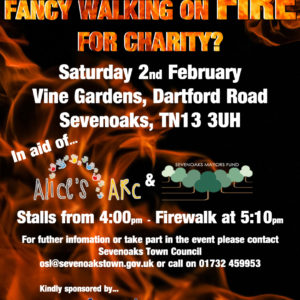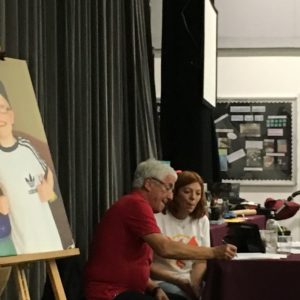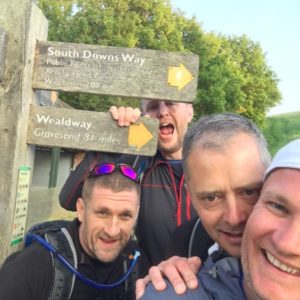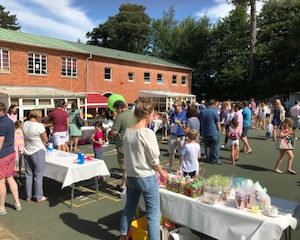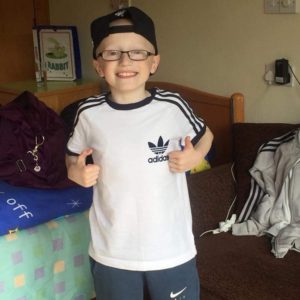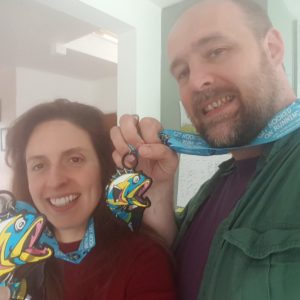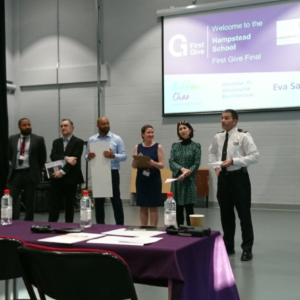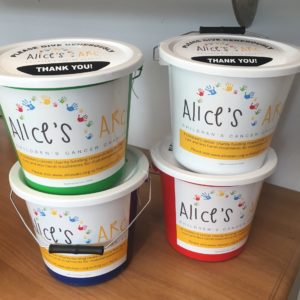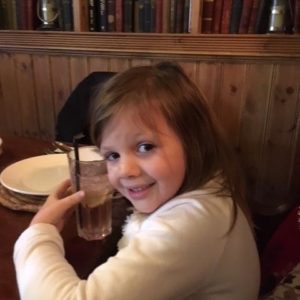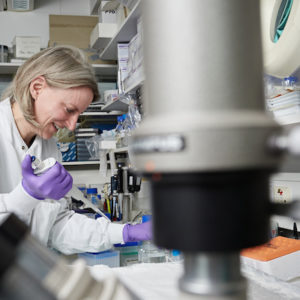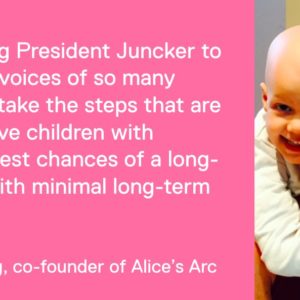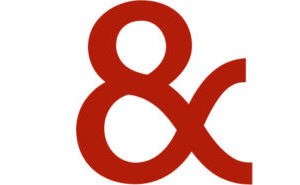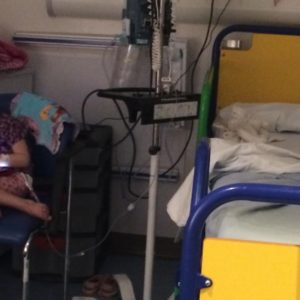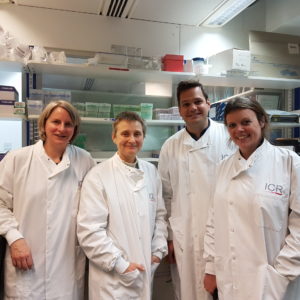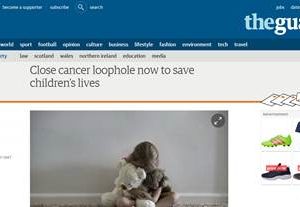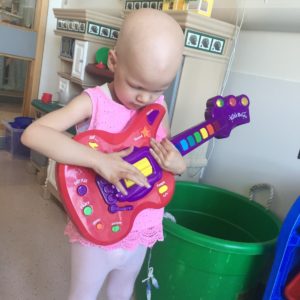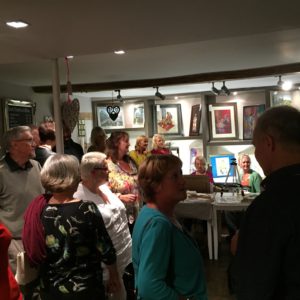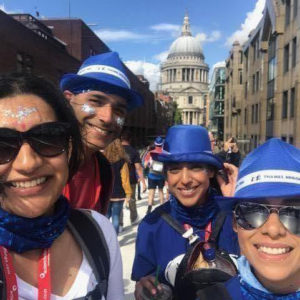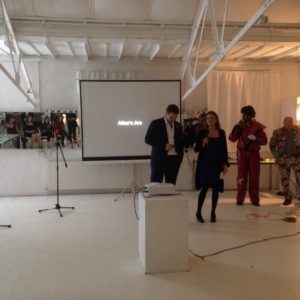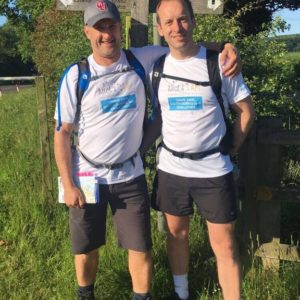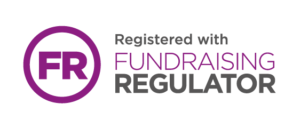In November 2019, we noticed a small swelling in Amy’s right eye’s lower eyelid, we originally didn’t think much of it – we thought she may have used her older sister’s makeup and had an allergic reaction. We went to Boots Opticians for some advice as we believed it was minor and didn’t want to bother the doctors. Unfortunately, after 3 days the swelling was not improving, in fact it was getting worse.
We took Amy to the Doctor who prescribed antibiotic drops but was also advised to take her to A&E if there was no improvement in a few days. Four days later we were in A&E. We had no idea what was going on as her eye was getting worse but she had no pain and her vision wasn’t affected. She was then seen by an Ophthalmic Consultant who thought it could be bacterial conjunctivitis and prescribed steroid drops and told us to come back in three days. The swelling continued to grow bigger every day. We returned three days later and the consultant referred Amy for an urgent MRI and bloods as they weren’t sure what was going on.
One week later, she’d had the bloods and MRI and the Consultant couldn’t find anyone to read the MRI and was concerned enough that we were referred to Leicester Royal Infirmary (LRI) the very next morning. The Consultant at LRI took lots of pictures, read the MRI and bloods, which led to the conclusion that Amy would need a biopsy ASAP due to the rate at which it was growing.
Four days later with the mass now growing out of her eyelid, obstructing her vision she had her biopsy and an overnight stay. Six days later on Christmas Eve 2019 we were given the news that Amy had embryonal rhabdomyosarcoma of the right orbit. Apparently it’s one of the ‘better’ subtypes to have, as survival rates are good. The doctors quickly devised a treatment plan.
On 27th December 2019, Amy had her hickman line inserted, bone marrow biopsy and a chest and head CT scan. 28th December, we spent the night at the Queen’s Medical Centre, Nottingham (QMC) for an MRI , then on the 2nd January, had a PET scan at Nottingham General Hospital (NGH)which revealed that the cancer was isolated to the orbit and had not spread anywhere else. 8th January 2020 Amy had her first chemo session. She was to have 8 cycles of chemo (IVA) and 28 rounds of proton beam therapy at the Christie, Manchester.
Eight days after Amy’s first treatment, she lost her hair, she didn’t let it bother her. She was adamant she was still herself and if people didn’t want to talk to her because she didn’t have hair, that was up to them. She remained upbeat all the way through. She lost lots of weight and her appetite changed due to treatment. She was referred to a dietitian and although we managed to get her to put a little bit of weight on, she didn’t put all the weight back on until a while after treatment. Although Amy didn’t need transfusions and only had one hospital admission due to infection, at times she struggled with panic attacks prior to each chemo, due to the fact she knew she was going to be poorly, which she didn’t like. That being said, she always encouraged others who were struggling with treatment.
Proton beam therapy at the Christie in Manchester meant six weeks away from home, in addition to this it was the first lockdown during COVID. We were staying at the StayCity apartments, which were lovely and looked after us so well. Amy also had her last inpatient chemo whilst she was there, she was so excited that she was tik tok dancing around the ward. The day she rang the bell for the end of proton was very emotional, we had made some amazing friendships there and it became like our own family away from home.
Amy is the youngest of 5 and her brothers and sisters were an amazing support during her treatment and continue to support her now. We were told she was cancer free in September 2020, it was amazing news, however, the worry has never gone away. Although her hair has grown back and she has grown into a beautiful teenager, we are beginning to see long term effects of her treatment. She has mental health issues, which have led to self harm, which we continue to work through. Amy has also developed a cataract in her right eye that they are currently monitoring.
We are now almost three years post treatment and are so grateful for all the support and care we have received and continue to receive. The journey doesn’t stop once treatment has been completed.
We wanted to create Amy’s Arc to help raise funds for research and to raise awareness and offer support to families in similar situations. We as a family are happy to share our experiences.
